Our White Fish
White Fish Product List
-
Atlantic Cod
-
Atlantic Haddock
-
Atlantic Pollock
-
Skrei
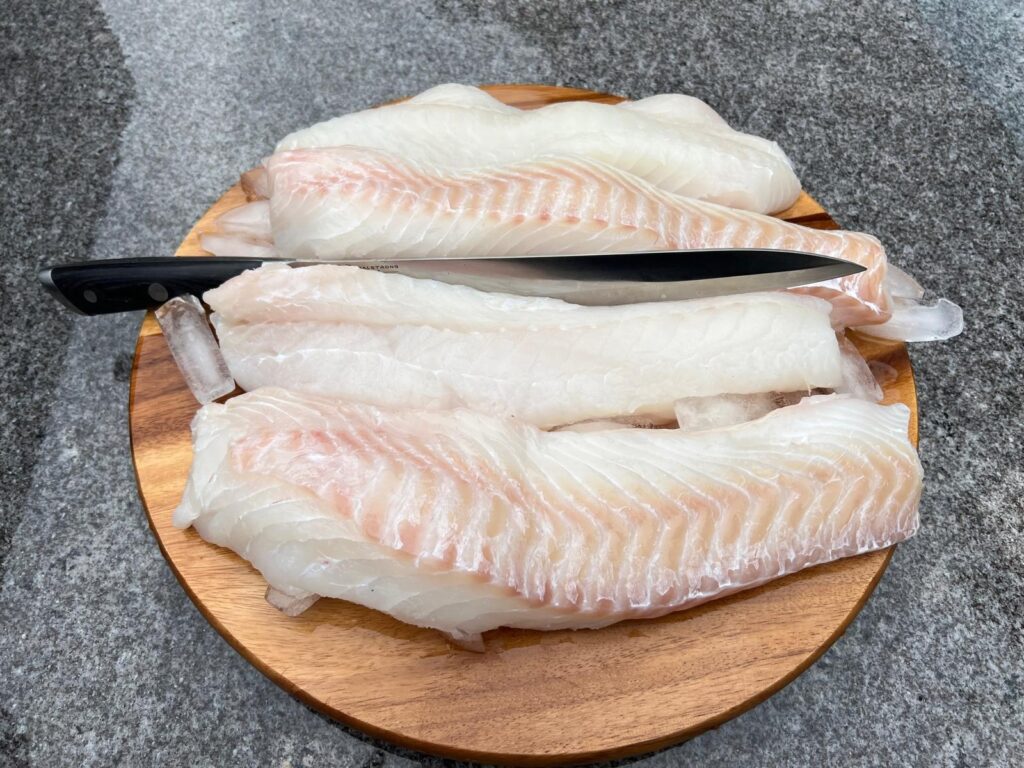
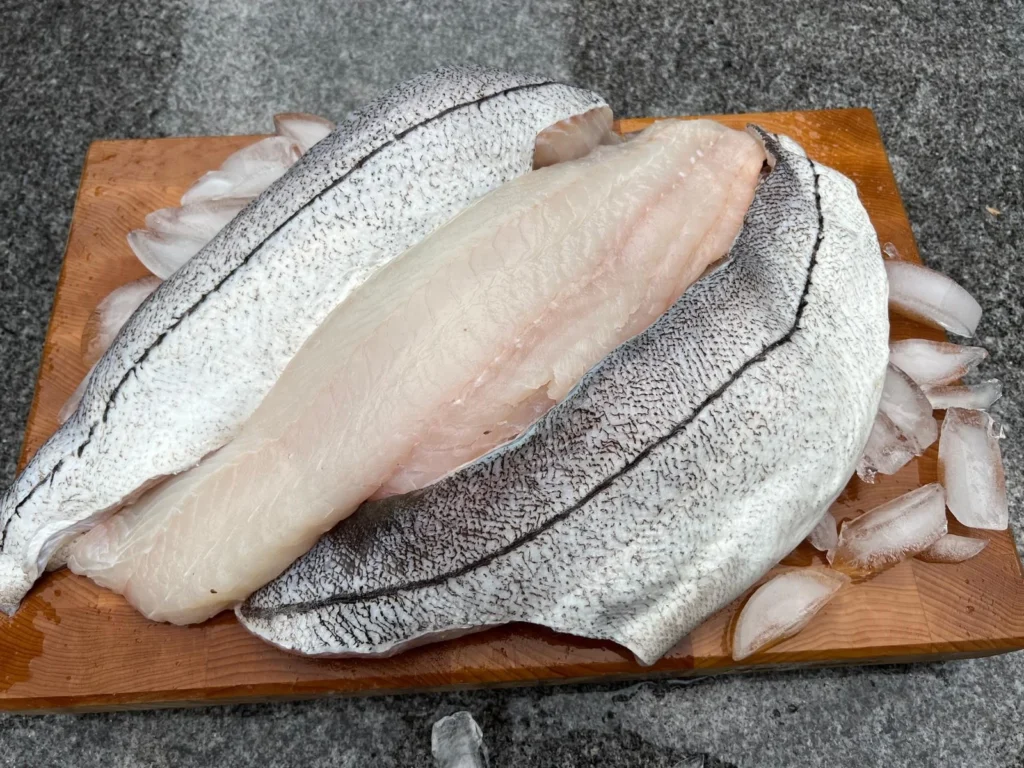
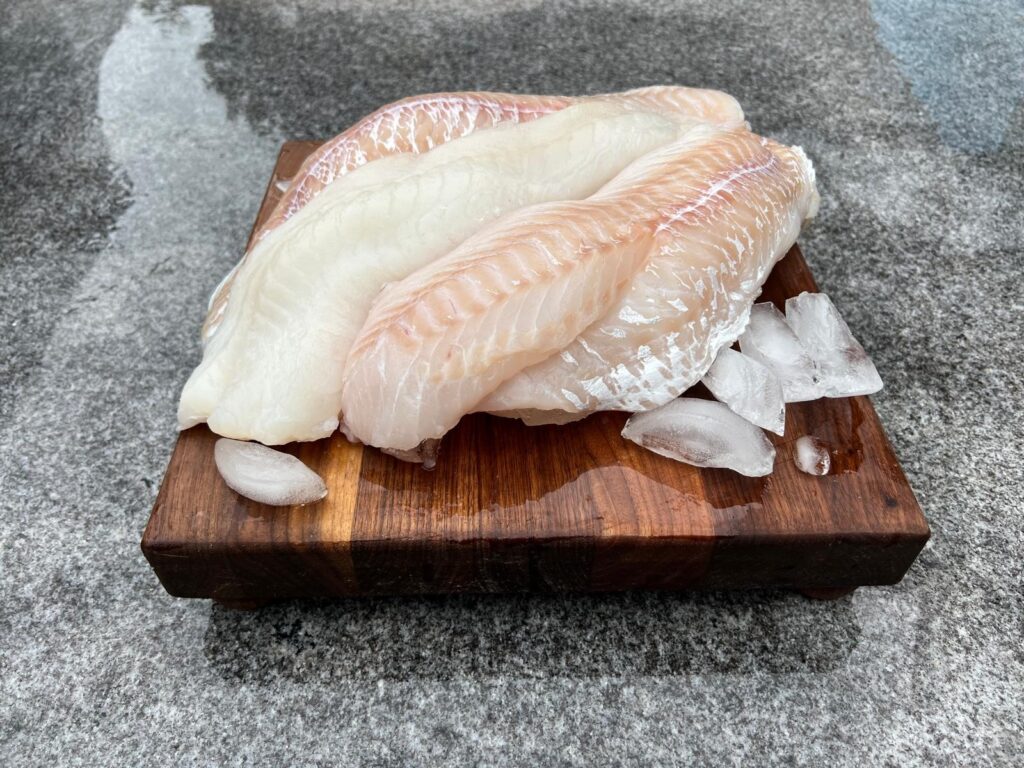
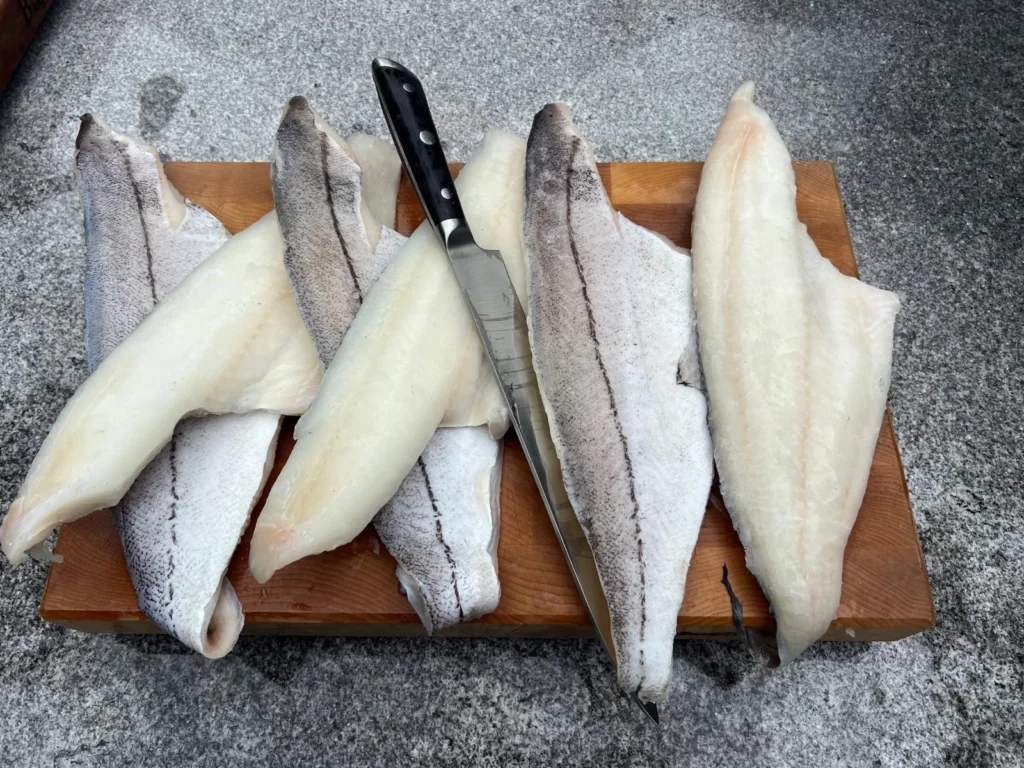
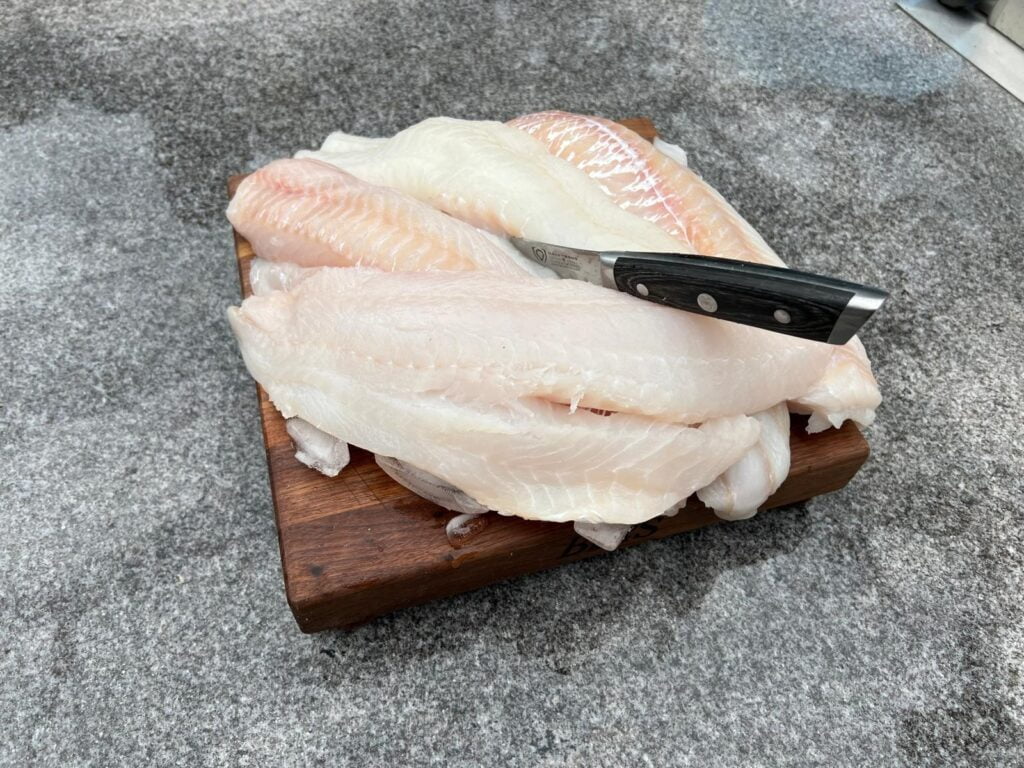
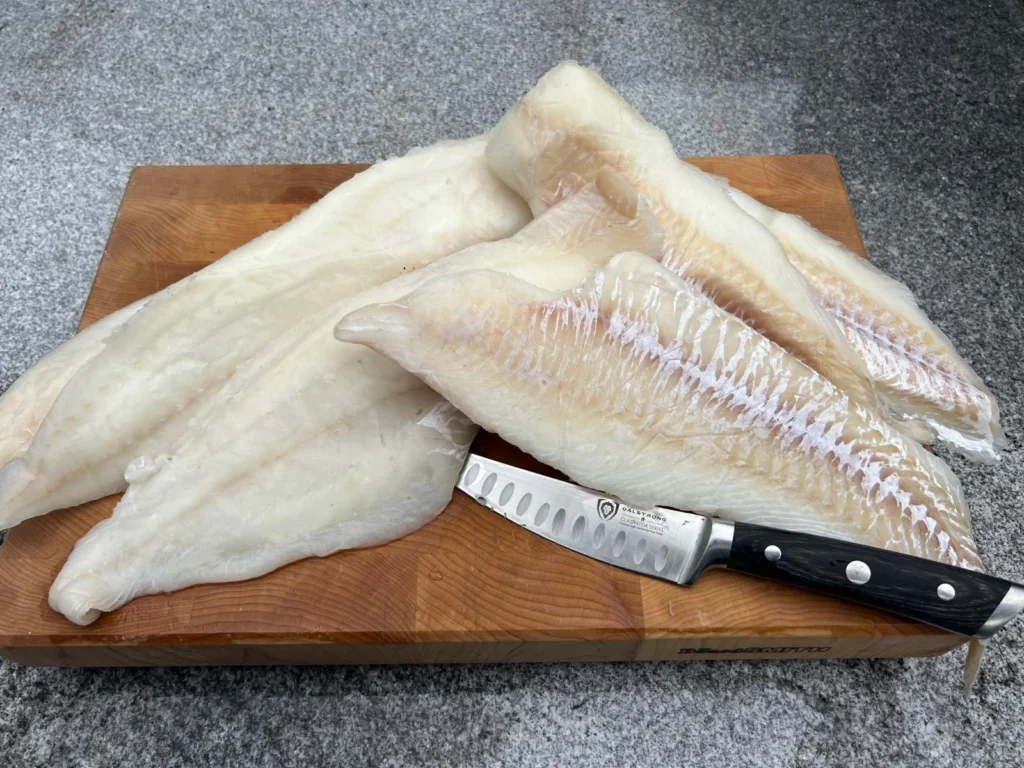
Whitefish is a term used to describe various species of fish that typically have white flesh. It is a broad category that includes several different types of fish found in both freshwater and saltwater environments. Whitefish are popular for their mild flavor and firm texture, making them versatile for cooking.
Some common examples of whitefish include:
Cod: Cod is a popular whitefish found in both the Atlantic and Pacific oceans. It has a mild taste and firm, flaky flesh.
Haddock: Haddock is another whitefish species commonly found in the North Atlantic. It is similar to cod in taste and texture.
Pollock: Pollock is a whitefish that is often used as a more affordable alternative to cod. It has a milder flavor and slightly softer texture.
Whiting: Whiting is a whitefish species found in the Atlantic and Mediterranean. It has delicate, flaky flesh and a mild taste.
Sole: Sole is a flatfish with a delicate flavor and tender texture. It is found in both saltwater and freshwater habitats.
Flounder: Flounder is another type of flatfish that belongs to the whitefish category. It has a mild, sweet flavor and a tender texture.
These are just a few examples of whitefish, but there are many other species that fall into this category. Whitefish are often used in various culinary preparations, including baking, grilling, frying, and poaching. They are commonly served as fillets and are popular choices for fish and chips, fish stews, and seafood dishes.
Atlantic Cod
Our MSC certified Atlantic Cod is caught directly from our boats ranging from Iceland to Norway; with our facilities located from Bodo all the way to Finnmark. In addition, we have IFS certified processing facilities on the east and west sides of Iceland to overcome most weather and supply issues.
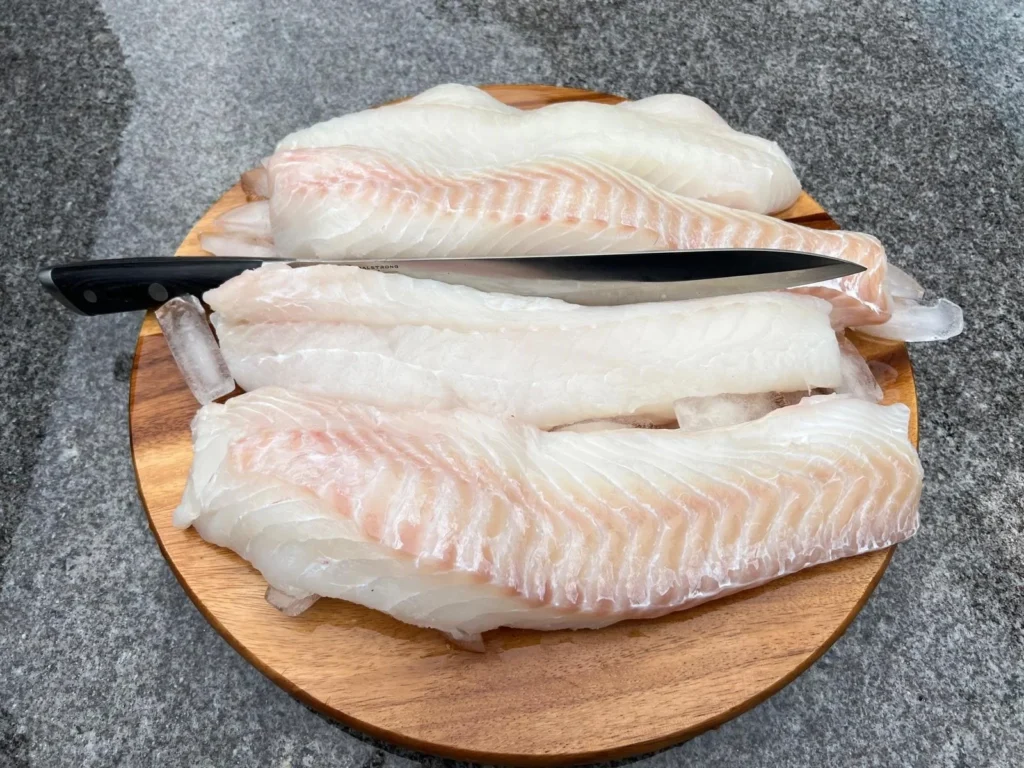
Cod from Iceland is highly regarded for its quality and sustainability. There are several reasons why Icelandic cod is considered to be some of the best in the world:
- Cold, clean waters: Icelandic cod is caught in the North Atlantic Ocean, where the water is cold and clean. This creates an ideal environment for the fish to thrive, which in turn leads to a superior taste and texture.
- Sustainable fishing practices: Iceland is known for its sustainable fishing practices, which are based on scientific research and a commitment to responsible resource management. The Icelandic government sets quotas for each fish species, which are based on the best available data on fish populations. This helps to ensure that fish populations are not over-fished and that the fishery remains sustainable for future generations.
- Traceability: Icelandic cod is carefully tracked from the moment it is caught until it reaches the consumer, which provides transparency and accountability in the supply chain. Consumers can be confident that they are getting a high-quality, sustainably sourced product.
- Nutritional value: Cod is a lean white fish that is high in protein, low in fat, and a good source of omega-3 fatty acids. Icelandic cod is no exception, and it is a healthy and nutritious food choice.
Overall, cod from Iceland is highly prized for its quality, sustainability, and nutritional value. It is a testament to the benefits of responsible fishing practices and the importance of traceability in the seafood industry.
Norwegian cod is highly regarded for its quality and taste. The cold, clear waters off the coast of Norway provide the perfect environment for cod to thrive and develop a firm, white flesh with a delicate flavor.
One of the key factors that make Norwegian cod so good is the strict regulations and sustainable fishing practices in Norway. The Norwegian seafood industry is committed to responsible and sustainable fishing, and the country has implemented strict quotas and measures to protect fish stocks and ensure their long-term viability.
Furthermore, Norwegian cod is known for being versatile and easy to prepare. It can be grilled, baked, fried, or poached and is often used in a wide variety of dishes, from traditional fish and chips to more sophisticated seafood dishes.
In summary, Norwegian cod is highly valued for its quality, flavor, and sustainability, making it a popular choice among seafood lovers around the world.
Skrei is a type of Norwegian cod that is highly prized for its quality and taste. The word “skrei” comes from the Norwegian word for wanderer, and refers to the fact that this particular type of cod migrates from the Barents Sea to the coast of Norway every year to spawn.
Skrei is known for its firm, white flesh and delicate flavor, which is often described as being slightly sweeter than other types of cod. It is also leaner than other types of cod, with a lower fat content.
Skrei is traditionally caught using sustainable fishing practices and is highly regulated by the Norwegian government to ensure its long-term viability. It is typically available from January to April each year, and is a sought-after delicacy in many countries around the world.
Atlantic Haddock
Our MSC certified Haddock is caught directly from our boats ranging from Iceland to Norway; with our facilities located from Bodo all the way to Finnmark. In addition, we have IFS certified processing facilities on the east and west sides of Iceland to overcome most weather and supply issues.

Icelandic haddock is known for its high quality and delicious taste. There are several reasons why Icelandic haddock is so good:
Cold, clean waters: Haddock is a cold-water fish, and Icelandic waters are some of the cleanest and coldest in the world. These conditions create an ideal environment for haddock to grow and thrive.
Sustainable fishing practices: Icelandic fishermen use sustainable fishing practices that ensure the long-term health of the fishery. This means that the haddock caught in Icelandic waters are not overfished, which helps to maintain the quality of the fish.
Freshness: Icelandic haddock is often caught, processed, and frozen on the same day, which helps to lock in its freshness and flavor.
Natural diet: Icelandic haddock feeds on a natural diet of shrimp, krill, and other small sea creatures, which gives it a unique flavor profile.
Processing methods: Icelandic haddock is often processed using traditional methods, such as salting and drying, which helps to enhance its flavor and texture.
All of these factors work together to create a high-quality product that is prized by chefs and seafood lovers around the world.
Norwegian haddock is also known for its high quality and delicious taste. There are several factors that contribute to the excellence of Norwegian haddock:
Cold, clean waters: Like Norwegian cod and Icelandic haddock, Norwegian haddock is a cold-water fish that thrives in the clean and cold waters of Norway. These ideal conditions help the fish grow slowly, which enhances the flavor and texture of the flesh.
Sustainable fishing practices: Norway has strict regulations in place to ensure sustainable fishing practices, which helps to maintain the health of the haddock population and protect the long-term viability of the fishery.
Freshness: Norwegian haddock is often caught and processed quickly, which helps to lock in its freshness and flavor.
Natural diet: Norwegian haddock feeds on a natural diet of shrimp, krill, and other small sea creatures, which gives it a unique and delicate flavor.
Processing methods: Norwegian haddock is often processed using traditional methods, such as smoking, salting, and drying, which helps to enhance its flavor and texture.
Overall, the combination of Norway’s cold, clean waters, sustainable fishing practices, and traditional processing methods contribute to the high quality and delicious taste of Norwegian haddock.